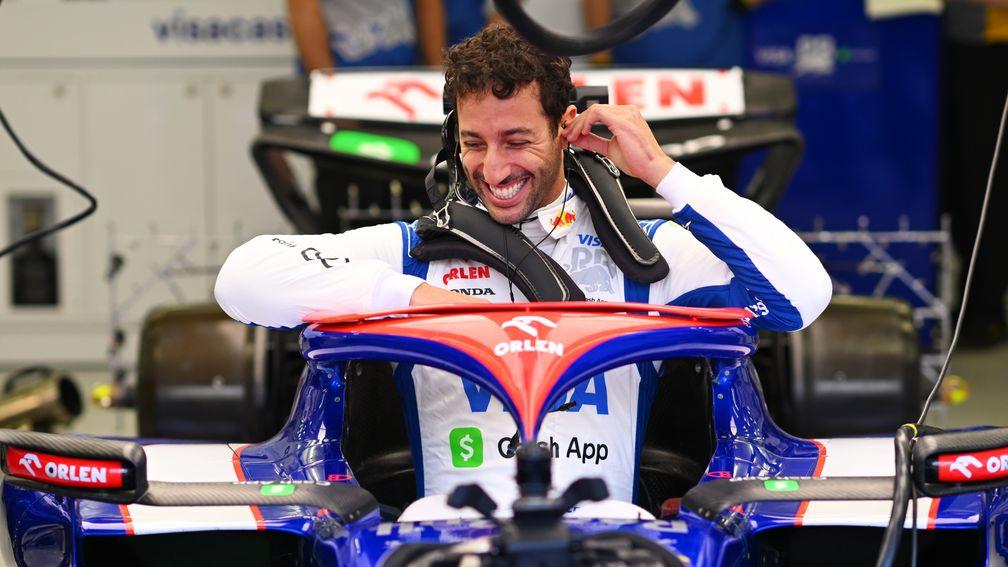Adam Scriven: Why earning an F1 seat has become even more of a challenge
F1 has always been an exclusive club but it is in danger of becoming even more of a closed shop

Ferrari shocked the Formula 1 world this winter by announcing the signing of seven-time world champion Lewis Hamilton for the 2025 season, however there are no driver changes on the grid for the upcoming campaign.
More than 500 footballers played a Premier League match last season and there were 215 golfers classified in the FedEx Cup rankings. However, there are only 20 Formula 1 drivers and for the first time ever the season begins with the same 20 incumbents who ended last season.
F1 has always been an exclusive club, but while the takeover of the sport by Liberty Media has in many ways made it more accessible, getting to race in the series has gradually become more of a closed shop and that doesn't look like changing any time soon.
This comes despite years of efforts to prepare young talent for Formula 1. In 2017 the two racing categories that act as support races on Grand Prix weekends were rebranded Formula 2 and Formula 3 and are F1's official feeder series.
Several teams also have academies or junior driver programmes, the most notable being Red Bull, who run the RB team alongside the world championship-winning outfit.
Last year AlphaTauri, as RB were then known, ran four different drivers during the season, but despite a huge pool of rookies they have given a 2024 race seat to 34-year-old Daniel Ricciardo alongside Yuki Tsunoda, who is entering his fourth year with the team.
There is a rule that all teams must field a driver with fewer than three Grand Prix starts in a practice session on two occasions throughout the year.
Accordingly, last year 11 non-regular pilots took to the track including the last two F2 champions, Theo Pourchaire and Felipe Drugovich. And yet none apparently showed enough to earn a race seat for 2024.
The primary reason for that was summed up by Williams boss James Vowles in an interview recently.
Read more on Formula 1 . . .
Bahrain Grand Prix qualifying betting tips and F1 predictions: Alonso could mix it at the front
"Five or six years ago we used to do about 30,000 kilometres of testing with a driver before you'd even consider putting them in the race car.
"They need enough that they can explore the boundaries and limits of it because the step from any other motorsport series into this one is enormous."
Allowing more testing would be one way to help young drivers make their way into F1, and it shouldn't be impossible.
In-season testing was banned in 2009 as a way to curb spending in an era when smaller teams struggled to stay afloat while the big boys spent astronomical amounts to gain hundredths of seconds through virtually unlimited running on the track.
But now F1 has a cost cap, which all the teams are capable of spending pretty close to, and so as long as testing activity doesn't take them above that, surely there's no need for an official testing limit.
The problem is that with 24 races already on the calendar, the teams are simply too busy racing or travelling to get any testing done.
Reducing the number of races would be universally popular judging from social media opinion, but would also cut into organiser profits so that isn't likely to happen.
The other option is to make the feeder categories more like Formula 1.
The closest series to F1 in terms of car performance is Japanese Super Formula, and one of their drivers, Liam Lawson, made a great impression in a handful of F1 starts for AlphaTauri last season – albeit not enough to earn him a full-time drive.
Boosting the performance of junior category cars is probably the most realistic idea, albeit not a quick fix, so for the foreseeable future a Formula 1 race seat could well remain a privilege that is easier to hold on to than to earn in the first place.
Click for more free bets and betting offers from the Racing Post
Published on 1 March 2024inOpinion
Last updated 16:21, 1 March 2024
- Sport’s ever-increasing riches coming at the expense of competition
- Simon Giles: Cherries ripe for further success under impressive Iraola
- Mark Langdon: Simone Inzaghi deserves more love
- Thriving non-league football is mercifully yet to be marred by VAR
- James Milton: English football is under a cloud but Sky Blues could brighten the mood
- Sport’s ever-increasing riches coming at the expense of competition
- Simon Giles: Cherries ripe for further success under impressive Iraola
- Mark Langdon: Simone Inzaghi deserves more love
- Thriving non-league football is mercifully yet to be marred by VAR
- James Milton: English football is under a cloud but Sky Blues could brighten the mood